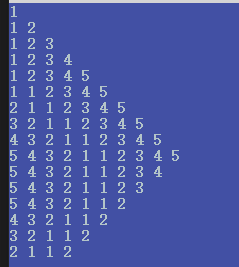|
|
 发表于 2021-6-21 17:45:09
|
显示全部楼层
发表于 2021-6-21 17:45:09
|
显示全部楼层
- #include <stdlib.h>
- #include <stdio.h>
- #include <string.h>
- typedef struct linkedlist {
- struct linkedlistnode* head;
- } linkedlist;
- typedef struct linkedlistnode {
- int data;
- struct linkedlistnode* next;
- } linkedlistnode;
- //你没给 ll 的定义, 我猜的
- typedef linkedlist* ll;
- ll LLCreate(void)
- {
- // TODO: replace this with your code
- // make the compiler happy
- ll list = (ll)malloc(sizeof(linkedlist)); //申请内存
- if (list == NULL) //申请失败退出
- return NULL;
- list->head = NULL; //设置初始值
- return list;
- }
- void LLDestroy(ll list)
- {
- // TODO: replace this with your code
- // make the compiler happy
- //(void)list;
- linkedlistnode* cur = list->head; //当前对象指针
- linkedlistnode* next; //下个对象指针
- while (cur != NULL)
- {
- next = cur->next; //下个对象指针 = 当前对象指针的next
- free(cur); //释放当前对象
- cur = next; //进入下一个对象
- }
- free(list); //释放玩所有节点后,释放链表对象
- }
- /**
- * Add an element to the end of the link-list
- */
- ll LLAppend(ll list, int item)
- {
- // TODO: replace this with your code
- // make the compiler happy
- //(void)list;
- //(void)item;
- if (list->head == NULL) //如果头节点为空,则初始化头节点就可以了
- {
- list->head = (linkedlistnode*)malloc(sizeof(linkedlistnode));
- if (list->head == NULL)
- return list;
- list->head->data = item;
- list->head->next = NULL;
- return list;
- }
- linkedlistnode* tail = list->head; //尾节点
- linkedlistnode* next = list->head; //下个节点
- while (next != NULL) //循环找到最后一个节点
- {
- tail = next; //当前的next就是当前的尾
- next = next->next; //next往下遍历
- }
- //找到尾节点后,在尾节点后添加新的节点
- tail->next = (linkedlistnode*)malloc(sizeof(linkedlistnode));
- if (tail->next == NULL)
- return list;
- //初始化
- tail->next->data = item;
- tail->next->next = NULL;
- return list;
- }
- /**
- * Add an element to the start of the link-list
- */
- ll LLPrepend(ll list, int item)
- {
- // TODO: replace this with your code
- // make the compiler happy
- //(void)list;
- //(void)item;
- //创建新节点
- linkedlistnode* head = (linkedlistnode*)malloc(sizeof(linkedlistnode));
- if (head == NULL)
- return list;
-
- head->data = item; //初始化数据
- head->next = list->head; //新节点的下个节点 设为 之前的头节点
- list->head = head; //让链表的头节点指向新节点
- return list;
- }
- /**
- * Remove and return the last element from the link-list
- * Or 0 if the list is empty
- */
- int LLShrink(ll list)
- {
- // TODO: replace this with your code
- // make the compiler happy
- //(void)list;
- if (list == NULL || list->head == NULL) //链表为空直接返回
- return 0;
- int index = 0; //记录序号
- linkedlistnode* next = list->head; //下个节点
- linkedlistnode* tail = list->head; //尾节点
- while (next->next != NULL) //遍历找到尾节点的前一个节点
- {
- tail = next;
- next = next->next;
- index++; //遍历时,找到尾节点的序号
- }
- tail->next = NULL; //断开最后一个节点的连接
- free(next); //释放空间
- return index;
- }
- /**
- * Remove and return the first element from the link-list
- * Or 0 if the list is empty
- */
- int LLShift(ll list)
- {
- // TODO: replace this with your code
- // make the compiler happy
- //(void)list;
- if (list == NULL || list->head == NULL) //空链表直接返回
- return 0;
- else if (list->head->next == NULL) //链表只有头节点,直接删除头节点然后返回
- {
- free(list->head);
- list->head = NULL;
- return 0;
- }
- linkedlistnode* head = list->head->next; //记录链表头节点的下个节点(链表的第2个节点)
- free(list->head); //删除头节点
- list->head = head; //链表头变为之前的第2个节点
- return 1;
- }
- void ShowList(ll list) //遍历输出链表内容,测试用....
- {
- linkedlistnode* cur = list->head; //
- while (cur != NULL)
- {
- printf_s("%d ", cur->data);
- cur = cur->next;
- }
- printf_s("\n");
- }
- int main()
- {
- ll list = LLCreate();
- LLAppend(list, 1);
- ShowList(list);
- LLAppend(list, 2);
- ShowList(list);
- LLAppend(list, 3);
- ShowList(list);
- LLAppend(list, 4);
- ShowList(list);
- LLAppend(list, 5);
- ShowList(list);
- LLPrepend(list, 1);
- ShowList(list);
- LLPrepend(list, 2);
- ShowList(list);
- LLPrepend(list, 3);
- ShowList(list);
- LLPrepend(list, 4);
- ShowList(list);
- LLPrepend(list, 5);
- ShowList(list);
- LLShrink(list);
- ShowList(list);
- LLShrink(list);
- ShowList(list);
- LLShrink(list);
- ShowList(list);
- LLShift(list);
- ShowList(list);
- LLShift(list);
- ShowList(list);
- LLShift(list);
- ShowList(list);
- return 0;
- }

|
|
 ( 粤ICP备18085999号-1 | 粤公网安备 44051102000585号)
( 粤ICP备18085999号-1 | 粤公网安备 44051102000585号)